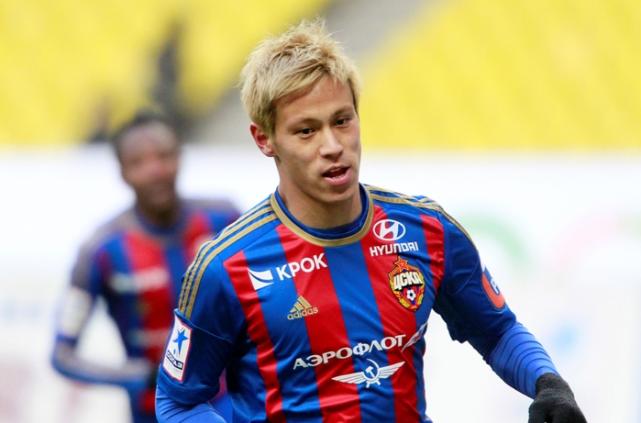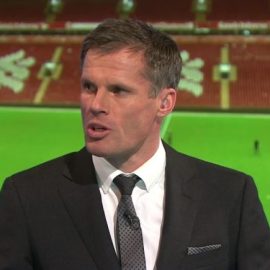There is little doubt that football in Asia was given a massive boost by World Cup 2002 which was jointly hosted by Japan and South Korea. It was doubly advantageous that the two hosts put on a good show on the field.
South Korea finished fourth, losing the 3rd Place play off, 3-2, to Turkey who were also responsible for ending Japan`s interest in the tournament with a victory in the last 16, 1-0. But that was where the good news stopped because football in the region did not build on the worldwide exposure 2002 gave them and Asia still awaits progress on the international stage at national team level.
Progress has been made in Asia but at club and individual level and has yet to take that progress to the next level, the international stage. There has been a steady stream of Asian players who have taken their talents overseas and succeeded in other national leagues, notably Europe.
Perhaps the most well known Asian footballers who departed home to pursue their club careers were; Park Ji-Sung, Shinji Kagawa, Keisuke Honda, Yuto Nagatomo and Shunsuke Nakamura.
Park Ji-Sung is one of the most decorated Asian footballers ever. He was the first Asian player to win the UCL trophy, the first to play in UCL Final, and the first to win the FIFA Club World Cup as well as four Premier League titles, all with Manchester United.
Shinji Kagawa went from Borussia Dortmund to Manchester United and in two seasons with them he became the first Asian footballer to score a Premier League hat trick, against Norwich City, and the first Japanese player to win a Premier League title, in 2013.
Keisuke Honda went from CSKA Moscow, where he spent four seasons, to AC Milan in 2014.
Yuto Nagatomo started with FC Tokyo in 2008 before a loan spell with Italian club Cesena led to him becoming the first Asian player to sign for AC Milan, in 2011. Nagatomo has already made well over 100 appearances for the San Siro outfit.
Shunsuke Nakamura is perhaps the most experienced player in terms of European club football having spent three seasons with Reggina in Italy before a four year spell with Glasgow Celtic where he became a legend. His ability with set pieces is on a par with the very best Europe has produced in the past 30 years. Indeed, whilst with Celtic, in 2007 he was nominated for the Ballon d’Or. Shunsuke won three Scottish Premier League titles as well as two League Cups and one FA Cup. In 2007 he became the first Japanese player to score in the Uefa Champions` League. Now aged 36 he is back in Japan with his first club Yokohama F Marinos.
The Japanese `J` League is the top football league in Asia and the only league given a top class ‘A’ ranking by AFC, the Asian Football Confederation. The Indian Super League, ISL, was founded just two years ago and is someway behind the ‘J’ League in that respect.
The ISL has seen a number of marquee signings in an attempt to capitalise on the global market for football. David Trezeguet signed for FC Pune City and 2010 World Cup winner Joan Capdevilla went to North East United FC just last year. Perhaps the biggest name to make the ISL his home is Italian legend Alessandro Del Piero who completed a hat trick of World Cup winners in the ISL when he joined Delhi Dynamos.
Last September it was announced that the ISL was to be broadcast to Australia, by Fox Sports. No doubt to capitalise on the popularity of Del Piero, a former Sydney FC player. It was also announced that Puma would be the official match ball supplier to the league
Meritorious though those moves are there are still major obstacles to Asian national sides progressing football progress beyond league level.
Lack of corporate and financial interest in local leagues subscribe to failure to entice local talent to forge careers at home hence the attraction for players to advance their careers by moving overseas.
Asian football progress is also hindered by the fixation with the Barclays Premier League and corruption. The massive interest in English clubs as well as the top sides in Europe deflects attention, not to mention finance, from domestic development and it is massively expanding market that shows no signs of relenting any time soon. And the illicit betting industry is a massive constraint on the growth of Asian football. It is estimated that of the 500 billion euros wagered on sports every year in Asia, 80% is illegal.
The acid test for Asian football will come in 2022 when the region hosts, maybe, its second World Cup, in Qatar. Maybe, only because there is a lot of water to flow under that particular bridge with the current controversies surrounding FIFA. Twenty years after the first Asian based World Cup, that is the time to assess the progress of Asian football, or not.
Although that competition is seven years away it is no exaggeration to suggest that the biggest and most positive step forward Asian football can make will in no small way be down to how the current Asia Cup in Australia is viewed.
Article written by: Brian Beard
Add Sportslens to your Google News Feed!







